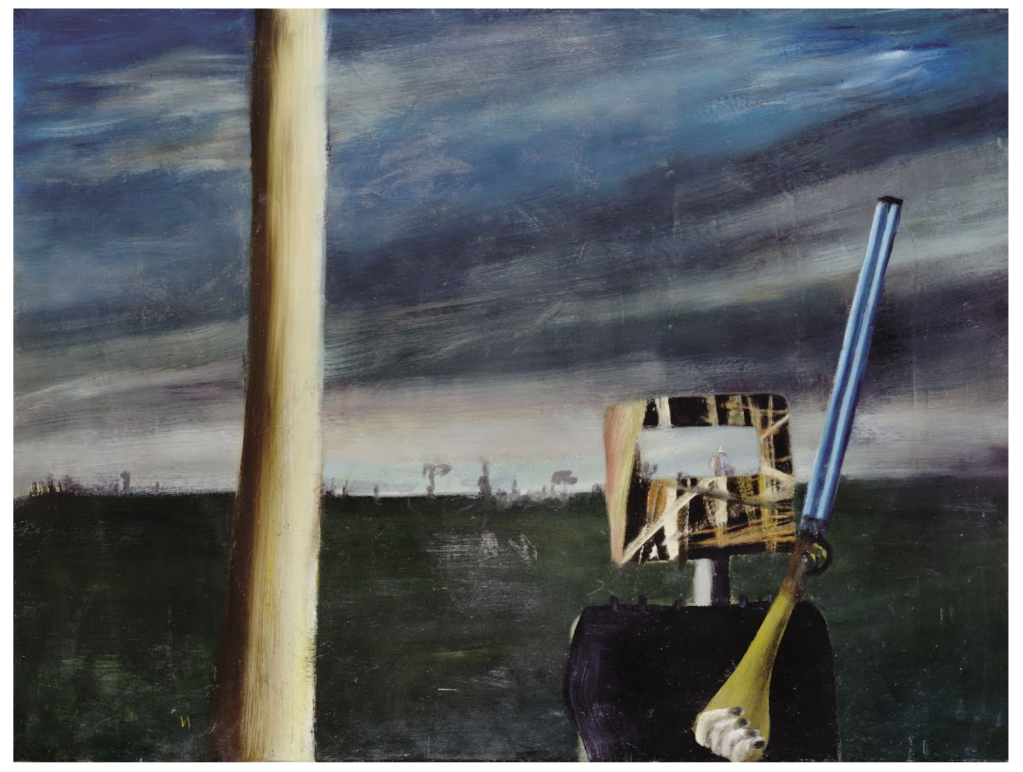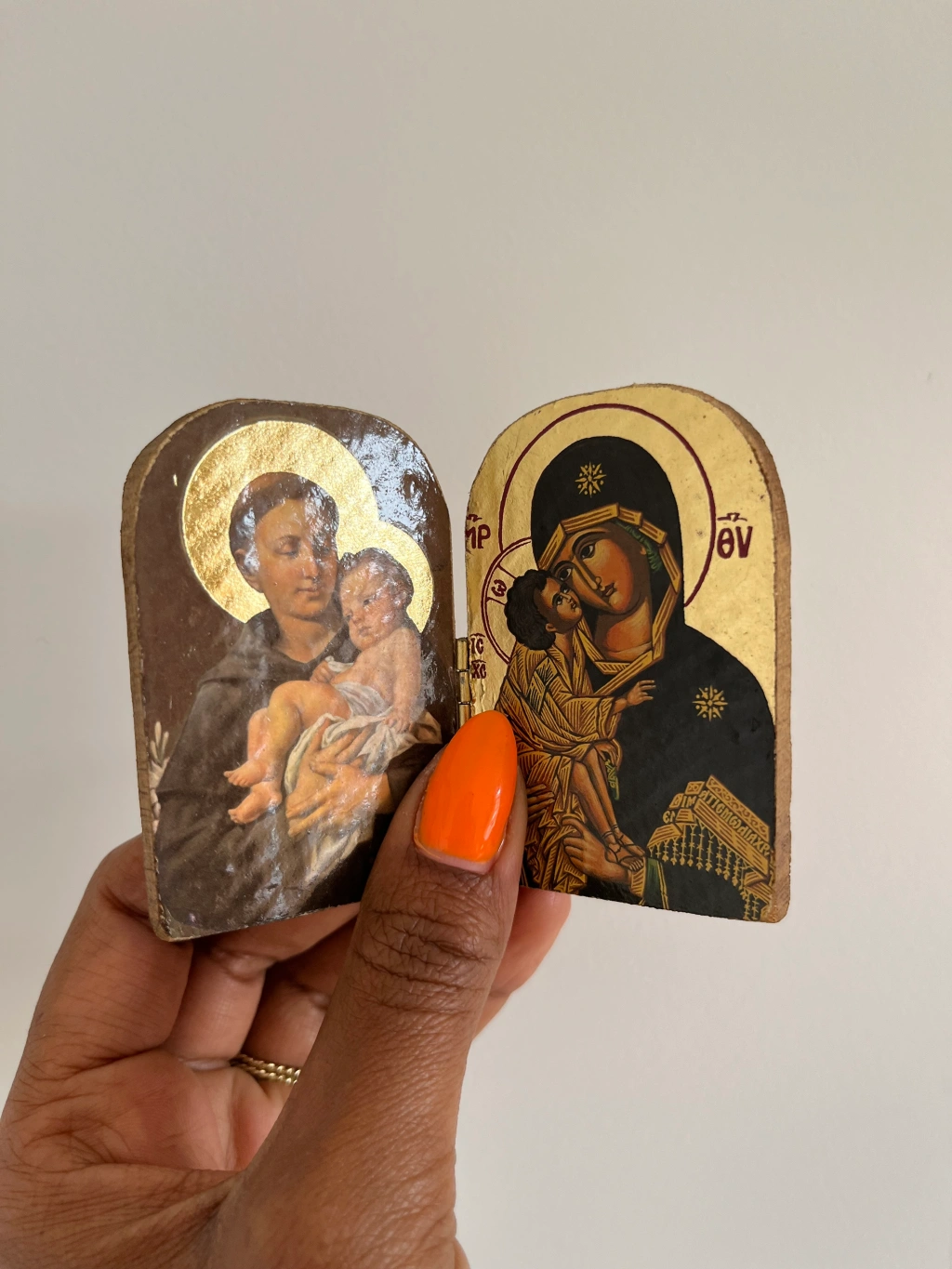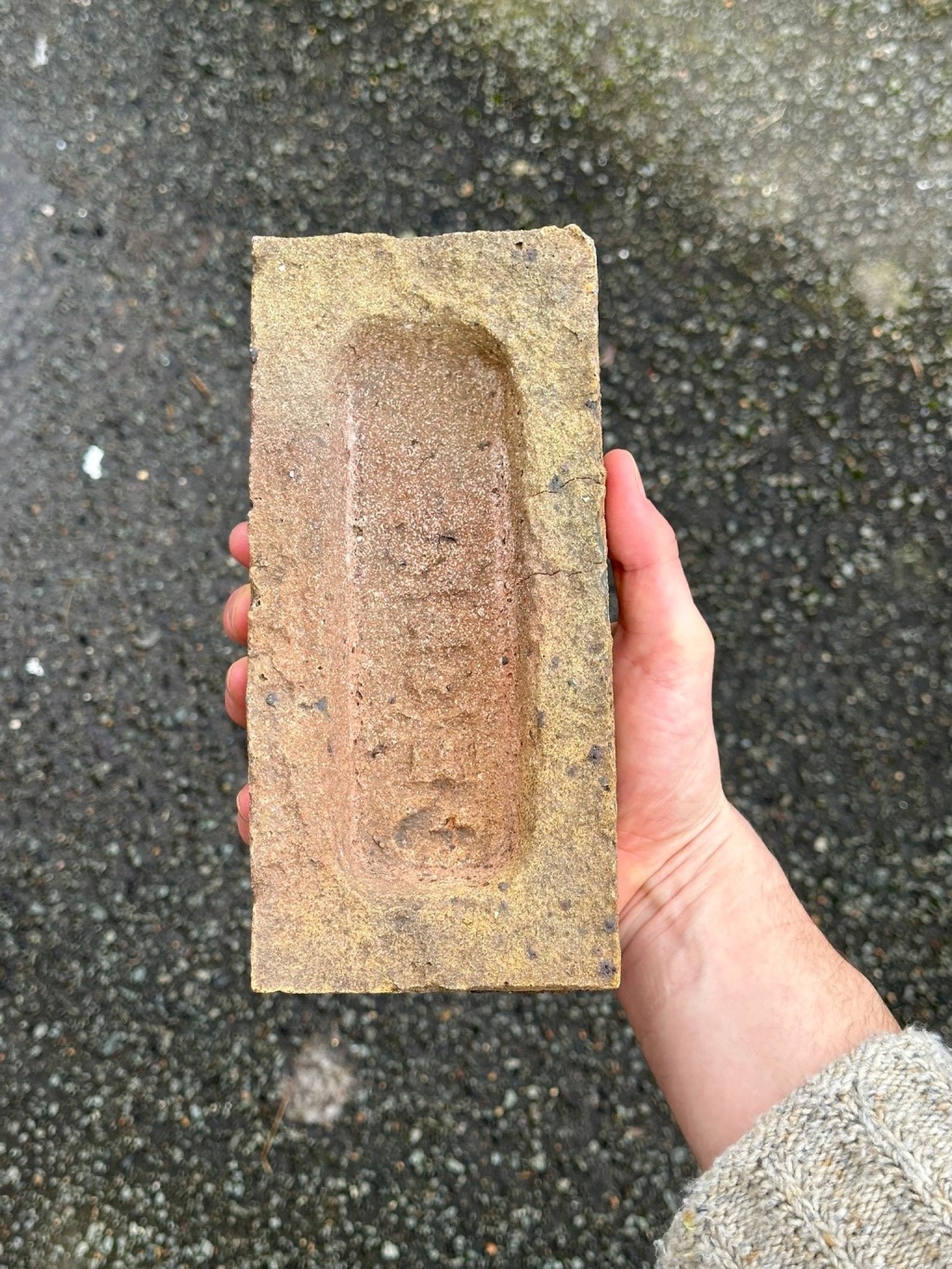
Richard Bourke, Professor of the History of Political Thought, on Sidney Nolan’s painting, Return to Glenrowan, 1946.
GB Tell me why you chose this.
RB In the first instance, because my grandmother had a Sidney Nolan print. In my grandparent’s house there was a large Ned Kelly print, a very rudimentary, rather cubist version of a Ned Kelly with just the helmet and the boot perched on a fence. I’ve had an interest ever since. So there’s the personal connection. But also, I like Sidney Nolan and I have an interest in his narrative-based legend paintings and the best of the legend or national myth ones was the Kelly series. I’m interested in all of them and the connections between them, not in some deep elaborate way but there is a progression to the end, so it’s an interconnected whole. I picked this particular one because it’s close to the end of the sequence. He was painting Ned Kellys all his life so I don’t mean a biographical sequence. Returning to Glenrowan was a final scene for Ned Kelly. The final shoot-out happens there and it’s where he gets caught, so the mood of it is different. The most famous one is where Ned Kelly is riding off into a yellow and blue landscape. It’s uplifting. It’s striking out into open, sunny territory. I like that one very much, but that’s the billboard version and it seems too obviously iconic. The one I picked is far gloomier and I suppose that tells you a lot about them. They’re all mood-oriented pictures. Some are comic, most are naive in some sense, in a deliberate way. He was asked once what the sequence was about and he said, “Kelly’s own words, and [Henri] Rousseau, and sunlight.”
GB So you’ve chosen something with a sentimental attachment?
RB Well I do have a sort of sentimental attachment because of my grandmother. I liked her a lot, but I do also like the image.
GB When you first saw it were you aware of its position in art history and the similarity to modern European paintings? Would that make a difference to you?
RB As a 14-year-old? No. But my view is that more contextual knowledge in terms of art history, adds more. Although I’m a verbal person rather than a visual person so I’m making no great claims here as far as my aesthetic sensibility goes vis à vis the visual, but being more cognitive than purely aesthetic, the more sense it makes to me, the more it appeals to me. The appeal in my case is greater if the appreciation is larger and by appreciation I mean what Nolan thinks he’s doing, and he was certainly interested in an art-historical background, there’s no doubt about that. He was interested in Picasso, Cubism, also literature, he nearly became a writer instead of an artist. He was auto-didactical but he did study the history of art and there’s definitely a self-consciously naive element in some of the Kelly sequence. The one I’ve picked doesn’t have the characteristic black armour helmet but the original helmet was a self-conscious Modernist black cube.
GB Is it important to you that both Sidney Nolan and Ned Kelly were of Irish descent?
RB Yes I like that, although Nolan is fifth generation. He’s aware of that and he’s aware of his identification with Kelly. It’s interesting in that Irish culture is an emigrant culture, a lot of the emigration is into the Empire, there’s more Irish history outside of Ireland, such as in the United States, Canada and Australia, than in the place itself. Ned Kelly’s father was a convict deportee. He died quite young after he was let out of prison so they settled as a family on a small farm and Ned Kelly was a criminal outlaw bushranger, up against the law and up against the Frontier. So I do see it as an insurgent culture up against the precincts of civilisation. He was the Bobby Sands of the late 19th Century.
GB Do you think Ned Kelly is to be admired?
RB Well there’s a difference between this painting sequence and the man himself. The man himself is interesting insofar that he was clearly a brutal outlaw. There’s no doubt that he was a violent figure. Family oriented, but that doesn’t have to make you a nice person. I’m not in any denial about it. But by the way, up against a very corrupt police force in the colony of Victoria and a victim of the system, but I don’t see this as exculpatory. Kelly dies in 1880 and the one I picked was painted in 1946, so within some kind of lifespan of memory. I’m not taking a position on it, but I am saying that what’s interesting about Sidney Nolan is that he’s recuperating a national myth and rewriting it in some sense. He’s making it mean something to a generation without necessarily taking a position on violent outlaw versus heroic Robin Hood figure. He’s aestheticised, beautified, the recycling of a myth. I think he did identify with him. He was a war-time deserter himself. He’s definitely cleansing it, if you want to look at it from the point of view of naked, nasty, ruthless murders, that’s clearly not the depiction. Some of it is very comic. If you look at the police officers, one of them ends up in a hole, one ends up upside down, and even the lacerated ones lying in pools of blood are still a little naive and not gory. I think he’s normalising it as part of Australian colonial inheritance.
GB In terms of naivety, do you think it was a good idea for Ned Kelly to put what was effectively a big metal bucket over his head for the final shoot out?
RB It worked. He survived. He had the armour made from surviving plough materials. He was the last one standing at Glenrowan. He died by hanging. It wasn’t just a helmet. It went down his body. He was shot in the legs and arms. It’s pathetic because he was going to be caught. He was surrounded in an Inn. It’s going to prolong your life maybe, but he was caught and he was tried and he was hung. The one I picked is the gloomiest because it’s on the eve of the final showdown. The others are about striking out into new adventure, but this is overcast and sparse. Through the visor you can see the police officer waiting. The beauty is in the depiction of the mood.
GB You’re an expert in Edmund Burke. Do you separate the sublime from the beautiful? Can you explain that concept?
RB The beautiful on Burke’s depiction is the agreeable, the manageable, the proportioned, the quaint, the appealing, the flower, the beautiful woman, the orchard, which appeals to your sense of just-so rightness. The sublime is the fear-inspiring, the terrible, the awesome and you fear for yourself in watching it. I don’t think I’d say this painting is sublime because it’s not awesome.
GB Could you get the sublime from any painting?
RB It would have to be large scale. Proportions that are beyond your perceptual capacity are the most conspicuous representation of the sublime, so the infinity of the sea, the infinity of space. Hegel’s preferred version of the sublime is the pyramid because it’s awesome. For him, that’s a religious impulse. In the end, it’s a god that’s awesome. So to represent a god in their awesomeness, size does it. Obviously the Egyptians thought that too which is why the Pharaoh was a god. For Hegel, the Egyptians are sublime and the Greeks are beautiful. In the latter case, it’s about the human dimension, the god is assuming human form. They had a cult of the beautiful body which was incorporated into their art. It’s two different attitudes to the world. One is the world as it is that can be perfectly depicted like Homer’s world or like a Greek statue. This world makes sense as it is, so you beautify it as a way of justifying its making sense. Whereas the sublime is something you’re in awe of, you feel small in relation to and you’re much more a petrified character in an unmanageable universe.
GB Kant’s criticism of Burke was that there was no empirical evidence of the aesthetic experience. Now there is a body of work by neuroscientists on this subject. Does that interest you at all?
RB Aesthetic means experiential and experiential means empirical. I have no interest in neuroscience in this context. I consult my own consciousness rather than a re-tabulated diagram telling me what I just felt. I don’t say it’s of no value. I don’t think I’d learn what my experience was by reading off another representation of the experience which would not be the experience. That’s like being told that knowing the molecular structure of a Picasso can help you understand why you appreciate Picasso. I suggest it doesn’t. But it does tell you something about the molecular structure of the painting if you want to know that.
GB What makes something worthy of the word Beauty to you?
RB I think aesthetic experiences are a way of making sense of our world, nothing else. There are various ways of making sense of our world via religion, philosophical argument, or via sensory depiction. It’s a device for telling yourself a story about the world you’re in, or a section of it. It’s delivering a sense of significance. If a work of art, as opposed to a religion or an argument, does so in a way that appeals by virtue of its aesthetic characteristics, that makes it worthy of the description, beautiful. But that could be a tautology.



